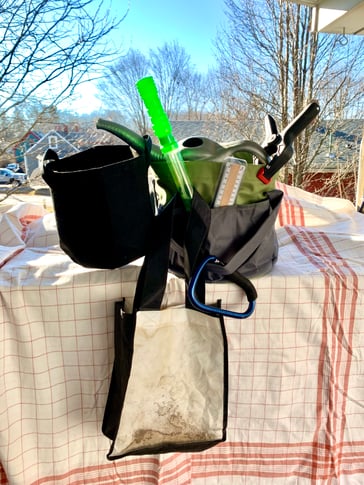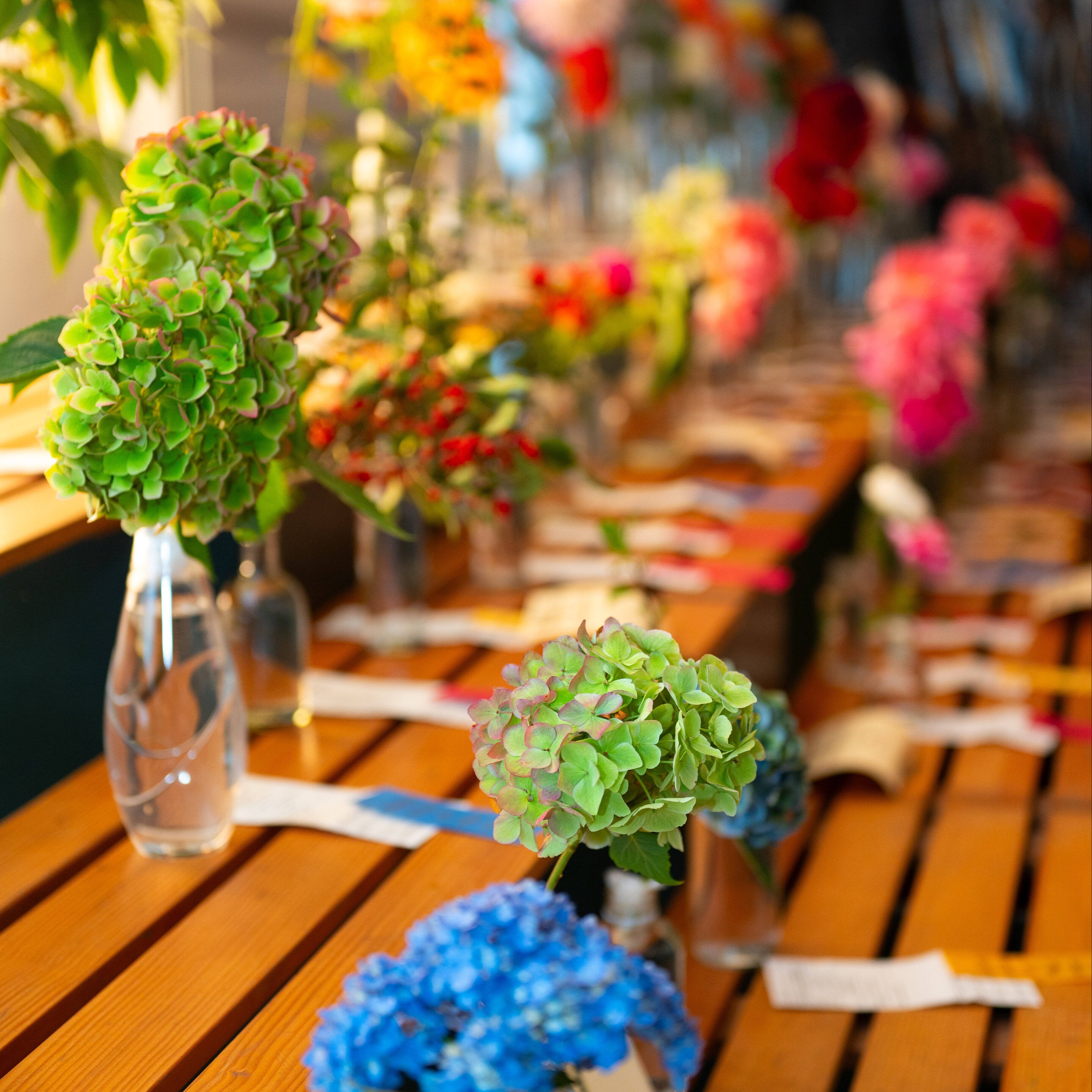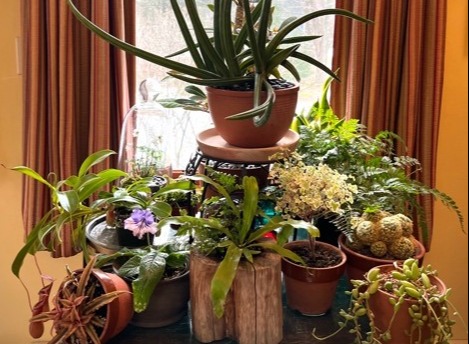“The garden suggests there might be a place where
we can meet nature halfway.”
-Michael Polland
Straight to the point, “adaptive gardening” means making small changes in gardening habits to accommodate the gardener’s physical needs. In the adaptive gardening mindset, small changes are equated with doing things in ways benefitting the natural world. A motto of the avid adaptive gardening movement is “Garden smarter, not harder.”
Some of the adaptations are familiar and readily accepted now. For instance gardening in raised beds or containers may be some common ways the first adaptations are made when a gardener is facing the limits arthritis may bring. Limiting standing in one place or facilitating gardening in a small container rather than in a large patch directly in the ground is easy to understand. But what are some ways to help facilitate that approach?
Selecting containers could result in large, heavy containers, and while gorgeous, may be difficult to move or to water. Consider what a “container” garden may look like, and most of all, how to place it for the plants’ benefits and your own joy in watching the plants mature, ripen, bloom or bear fruit. Containers made of cloth or various fabrics are common—and be creative in selecting or repurposing cloth containers you may have on hand. Double up on the benefits of soft sided bags as container gardens. Plants in these bags will have strong roots, since the fabric breathes and will naturally aerate them. Using cloth containers leads to a need for more frequent watering, so consider placing them closer to water sources or consider a nicely balanced watering jug which has a wide handle so lessen the tightness your grip needs to be to carry it. Smaller container = less water to carry. Once you latch on to some adaptive considerations, you will find a lot of ways you’ll feel creative implementing adaptive gardening techniques. 
For those modifying their gardening practices and restyling their gardens, it may seem new tools are necessary and replacement expenses incurred. This is a great time to let your creativity soar and consider practical aspects of our anatomy and good ergonomic practices. Letting your wrists and elbows work from neutral positions, limiting twisting motions in our arms from our shoulders, and modifying handles of tools with the body in mind means you can work in twenty-minute spurts, take a break, and return to your garden tasks without pain you may have previously felt when using straight-handled tools. Check PVC pipe modifications you can make to help put an extended grip on a rake handle, for example, to help one arm help another more effectively if one side of the body is compromised. PVC parts are inexpensive and readily available in local hardware stores or nationally recognized building supply stores. PVC bits and pieces can be fun to explore and consider the curved pieces as additions to many of your tools!
Taking a look at your overall garden and plan for the future and our changing bodies should feel like an opportunity to think of what is good for the environment and for our physical limitations. Where you may have planted annuals, change your mindset and consider planting perennials—especially native plants—to attract beneficial insects, butterflies and birds. While we feel that early spring color is giving us joy, the downside of too many annuals means we neglect the needs of the natural world. Designing with perennials, we are also giving ourselves more time to enjoy the garden by removing the tedious attention the annuals need.
Consider replacing patches of lawn with shrubbery, to reduce the need to mow, and increase the habitat needed for a healthy environment. With shrubbery, you will discover some songbirds nesting areas, pollinators will appreciate the bloom times being varied from early season to late in the autumn. A whole new world of winter interest is seen in the shape of shrubs or bushes, minus their leaves. With evergreen plants, you will see their striking shapes against the white snow. Working with your favorite garden centers, or university cooperative extension services, you can find recommended plant lists to help you rethink your garden for the tasks you can complete and beneficial wildlife you’ll attract.
You may think there will be more work with perennials or herbaceous plants needing pruning. While some of these will need periodic pruning, consider the tools which will make that job easier and safer. Get ahold of an extended arm reaching tool, to grab a branch you are trying to prune. Don’t overreach or stretch anymore to get the cane or branch you are concentrating on, use an inexpensive reaching tool, and see how easily that pruning task is accomplished! Be creative thinking of this armature’s other uses—as you sit or stand over a raised bed, keep it handy and let it do the reaching for your garden gloves which you may have in your gardening bag or you left on the chair you were sitting on.
What about that gardening bag? What do you think you’ll need? Consider your tasks and limit your trips back and forth to your house, garage or tool shed. Pack sunscreen—as we age our skin has less natural moisture and becomes thinner. Protect it! Pack water. Staying hydrated is important for everyone, but as we age or recover from surgeries or injuries, it is more important than ever. Fresh, cooled water is best for your gardening sessions. If you have over iced your drink, your body uses valuable energy to warm it up as it goes in your digestive system. Save that energy to enjoy your iced drinks as you sit down and enjoy your garden! Pack a ruler, measure which seedlings are growing how much week-by-week. This data collection will help you continue to plan your plant selections based on what grew well, what you enjoyed watch grow, deadhead, or eat!
Planning a sitting area, accessible on a straight firm pathway, will offer you the place to relish views of what you are watching grow throughout the year as well as a place to get to safely on your own or with a walking aid.
This winter, while you are planning your garden, think ahead about what you are capable of taking care of, realistically and comfortably. Take some of your snow stakes for marking the sides of your driveway or sidewalk and go mark out the area you’ll plant this year. Remember seed packets recommend spacing for the plants’ benefit but you need to also visualize space for your benefit. Marking the area with realistic goals and accurate measurements will get you prepared for the reality of a garden you can manage with adaptive tools and planning your garden tasks with your body’s needs in mind. Adaptive gardening opens the door for you to say you are happy to appear lazy as a gardener because you know you are gardening smarter, not harder!





